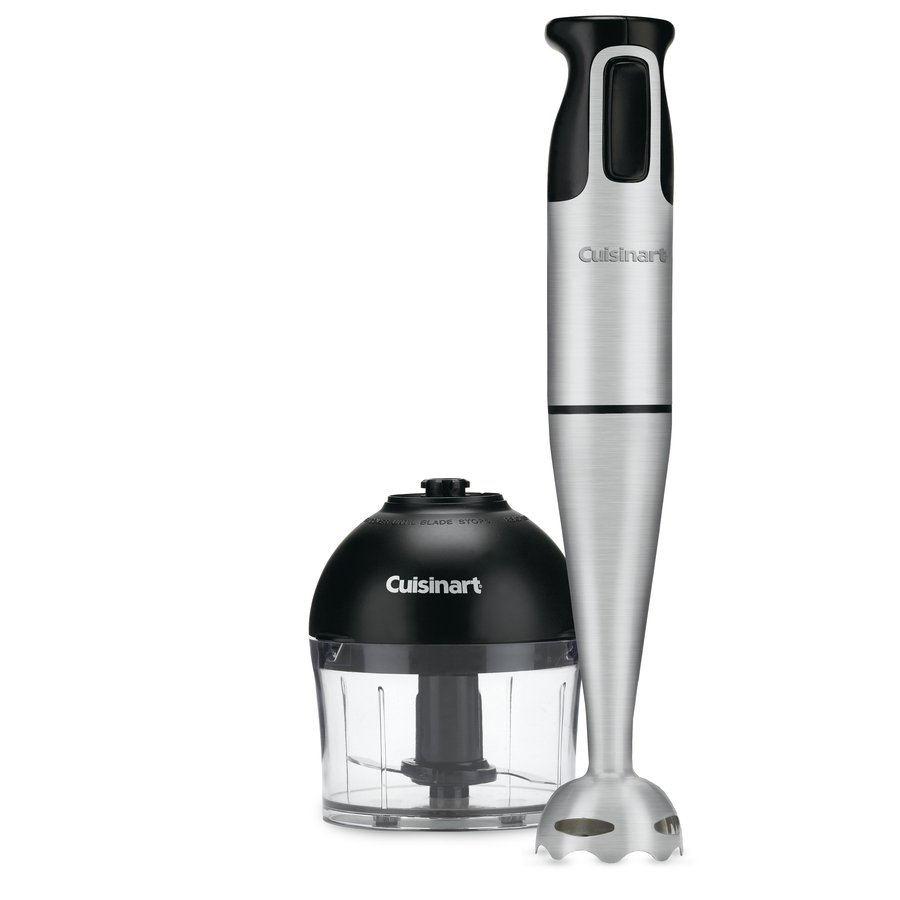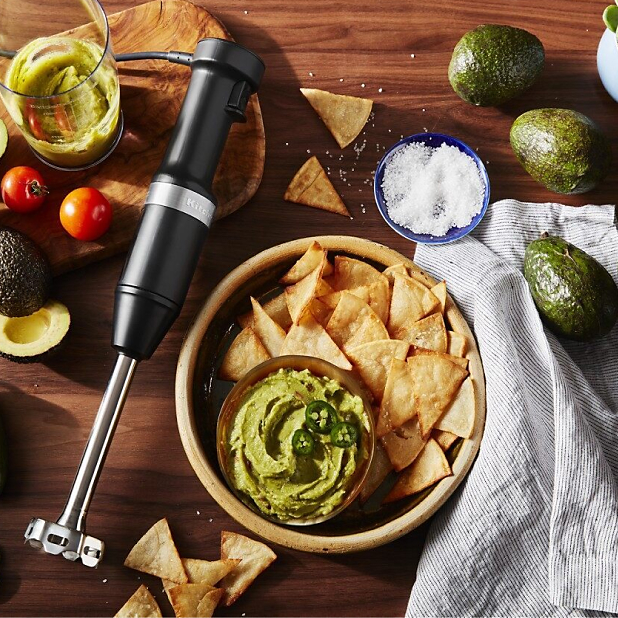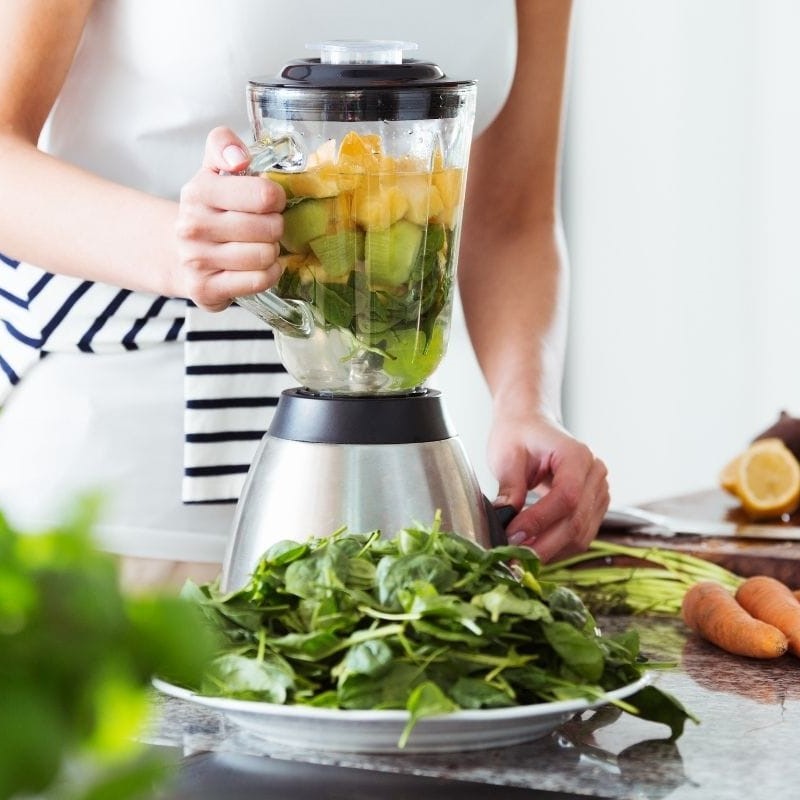
Introduction to Food processor vs Immersion blender
Food processor vs immersion blender: Which Wins? In the quest for kitchen efficiency, food processors and immersion blenders appear often. Both can save you time and effort. Food processors are kitchen workhorses. They can slice, dice, chop, shred, grind, and even knead dough. By contrast, immersion blenders are hand-held tools. They blend, purée, and emulsify right in the pot or bowl.

Knowing when to use each can transform your cooking experience. Food processors work best with solid ingredients. Immersion blenders are better for blending liquids or soft foods. Both have special features and limitations. Your choice hinges on what you need to make.
This post will guide you through their differences. It will help you decide which tool wins a place in your kitchen. Keep reading to compare their strengths and weaknesses. Also, discover recommended uses for each to enhance your culinary endeavors.
Key Differences in Functionality and Usage
Understanding the key differences between a food processor and an immersion blender is essential. Each excels in different tasks due to its design and functionality. Food processors have large, fixed bowls and variety of blades and attachments for diverse tasks. Immersion blenders are slim, handheld tools with a single blade, suited for blending directly in pots and bowls. It’s crucial to match the appliance to the task for best results.
When to Use a Food Processor
Food processors are ideal for dry or solid foods. Use them when you need to:
- Chop vegetables uniformly
- Grind nuts or seeds quickly
- Knead dough for bread or pizza
- Slice or shred ingredients, like cheese or carrots
- Mix heavy batters or doughs
With a range of attachments, they manage tasks that require precision and power.
When to Use an Immersion Blender
Immersion blenders shine with liquids and soft ingredients. Deploy them to:
- Purée soups directly in the pot
- Blend smoothies in a cup or bowl
- Mix light batters or pancake mix
- Create creamy emulsifications like mayonnaise
- Mash soft-cooked vegetables
Handy and easy to clean, they’re perfect for quick, in-pot tasks.
Strengths and Weaknesses of Food Processors
When judging the capabilities of food processors, it’s essential to weigh their strong suits against their limitations.
Strengths of Food Processors
Food processors come packed with features that make them a superb choice for specific tasks:
- Powerful Performance: They handle tough tasks like kneading dough and grinding nuts with ease.
- Multiple Attachments: Various blades and disks allow for chopping, slicing, grating, and more.
- Large Capacity: Their spacious bowls can process large quantities of food at once.
- Speed and Precision: Food processors work quickly and provide consistent results.
- Versatility: They perform a wide range of functions, from making pastes to shredding vegetables.
However, there are also some weaknesses to consider:
Weaknesses of Food Processors
Despite their strengths, food processors have drawbacks:
- Size: They can be bulky and require storage space.
- Setup Time: Preparing the machine and selecting attachments can take time.
- Cleaning: Multiple parts mean more cleaning effort is needed.
- Handling Liquids: Food processors are not ideal for processing large amounts of liquid.
- Noise Level: They can be quite loud during operation.
Understanding these pros and cons can help you decide when a food processor is the right tool for your culinary projects. Whether you’re making pie crust or chopping a batch of onions, the food processor’s strengths will likely outweigh its weaknesses for many kitchen tasks.
Strengths and Weaknesses of Immersion Blenders
When considering an immersion blender, it’s vital to know its advantages and limitations.
Strengths of Immersion Blenders
Immersion blenders offer several key benefits:
- Ease of Use: These tools are straightforward to operate with one hand.
- Direct Blending: Blend or purée foods right in their pots or containers.
- Easy Cleanup: They have fewer parts to wash than food processors.
- Portability: Immersion blenders are light and easy to move around.
- Space-Saving: Their slim design requires little storage space.
However, immersion blenders also have their downsides:
Weaknesses of Immersion Blenders
Some of the limitations include:
- Less Power: They may struggle with hard ingredients like raw carrots.
- Limited Functions: Primarily for blending, not suitable for dry tasks.
- Small Quantities: Best for single servings or small batches.
- Noisy Operation: Some models can be quite loud, similar to food processors.
- Splash Risk: Without careful use, they can cause splattering.
Knowing these strengths and weaknesses will help you use immersion blenders effectively. For liquids or soft foods, they’re often the best choice. But for tougher tasks, consider a food processor.
 Recommended Uses for Food Processors
Recommended Uses for Food Processors
When considering a food processor for your kitchen, think about the tasks it excels at. Designed for efficiency and versatility, food processors specialize in several kitchen activities. Here are some of their recommended uses:
Chopping Vegetables
Get evenly chopped veggies in seconds for salads, salsas, or meal prep without the manual effort.
Grinding Nuts and Seeds
Turn nuts and seeds into fine powders or creamy butters quickly and with ease.
Kneading Dough
Effortlessly mix and knead dough for homemade bread, pizza bases, or pastries.
Slicing and Shredding
Slice or shred ingredients like cheese, carrots, and cabbage consistently with included attachments.
Making Pastes and Dips
Create smooth pastes and delicious dips, such as pesto or hummus, in a snap.
Preparing Desserts
Whip up bases for cheesecakes, crumble toppings, or cookie doughs reliably.
Use a food processor for these tasks to save time and achieve great results. Each job is done with precision, which might be hard to replicate by hand. While they require some setup and cleanup, their performance justifies their place in many kitchens.
Recommended Uses for Immersion Blenders
Immersion blenders excel in specific kitchen tasks. They are handy, especially for blending right in the cooking container. Let’s explore how best to use these versatile tools:
Pureeing Soups
Directly blend soups in the pot without transferring to a blender. Achieve smooth, creamy textures easily.
Creating Smoothies and Sauces
Make single servings of smoothies or sauces directly in a cup or bowl. Enjoy quick preparation and minimal cleanup.
Emulsifying Mayonnaise and Dressings
Create homemade mayonnaise and salad dressings. The immersion blender mixes liquids and oils consistently.
Mashing Cooked Vegetables
Mash potatoes, squash, or other soft-cooked vegetables. Achieve a perfect texture without removing them from the pot.
Blending Pancake Batter or Eggs
Mix pancake batter or scramble eggs conveniently. Expect uniform results with minimal fuss.
These uses highlight the immersion blender’s strengths in managing liquids and soft foods effectively. They are perfect for small-scale, direct tasks that require quick execution and simple cleanup.
 Conclusion: food processor vs immersion blender
Conclusion: food processor vs immersion blender
Deciding between a food processor and an immersion blender hinges on your kitchen needs. For tough tasks like kneading dough, slicing veggies, or grinding nuts, a food processor is key. It gives power and precision with various attachments.
But, if you love soups or smoothies and seek quick, easy blending without lots of clean-up, go for an immersion blender. It’s perfect for pureeing or emulsifying directly in the pot or bowl.
Assess your cooking style and space. If you need both, think about the tasks you do most. Invest based on that. Don’t forget, food processors are bulky and need more cleaning, but they’re great for big jobs. Immersion blenders save space and are easy to clean, ideal for smaller, quicker tasks.
Always match the tool to the task for the best cooking experience. Remember, the right choice can make meal prep faster and more enjoyable. Happy cooking!





